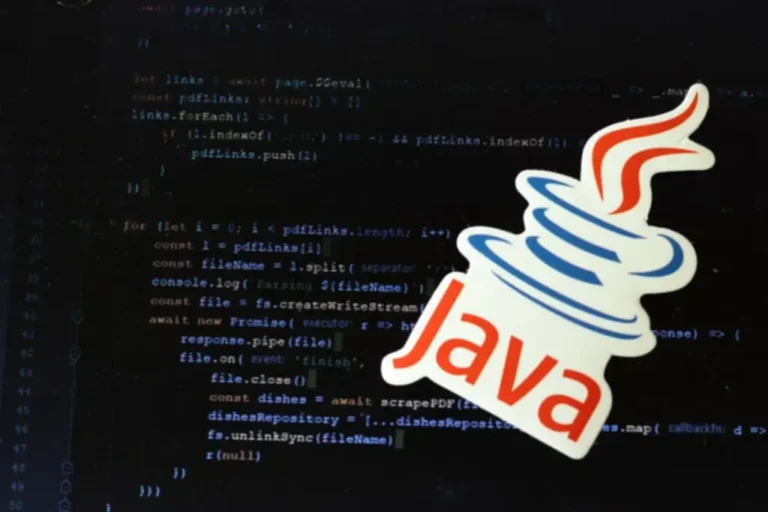Understanding Lstm: Long Short-term Memory Networks For Natural Language Processing
- Software development
- abril 15, 2025
Lengthy Short-Term Memory(LSTM) is widely utilized in deep learning because it captures long-term dependencies in sequential information. This makes them well-suited for tasks corresponding to speech recognition, language translation, and time sequence forecasting, the place the context of earlier knowledge points can influence later ones. LSTMs discover essential functions in language technology Legacy Application Modernization, voice recognition, and picture OCR tasks.
- Facial Features Recognition (FER) has more and more turn out to be a more challenging and multifaceted analysis topic among the researchers within the last decade.
- I actually have been working as a machine studying engineer and software program developer since 2020 and am passionate concerning the world of information, algorithms and software growth.
- The drowsiness or closed eyes are not thought-about in this research work and with related datasets our future work may think about these expressions as properly.
- In essence, LSTMs epitomize machine intelligence’s pinnacle, embodying Nick Bostrom’s notion of humanity’s ultimate invention.
- In such a community, the output of a neuron can only be passed forward, however by no means to a neuron on the identical layer and even the previous layer, hence the name “feedforward”.
Breaking Down The Architecture Of Lstm
This research efficiency was evaluated and in contrast with current hybrid approaches like CNN-SVM and ANN-LSTM where the proposed mannequin delivered higher outcomes than other models thought of. The output of a neuron can very properly be used as input for a earlier layer or the present layer. This is much nearer to how our brain works than how feedforward neural networks are constructed. In many applications, we also need to know the steps computed immediately earlier than improving the overall end result. In many functions, we also need to understand steps computed instantly before improving the general outcome. The LSTM cell also has a reminiscence cell that shops information from previous time steps and makes use of it to affect the output of the cell on the current time step.
Cnn-lstm Based Emotion Recognition Using Chebyshev Second And K-fold Validation With Multi-library Svm

Unlike RNNs which have got only a single neural net layer of tanh, LSTMs comprise three logistic sigmoid gates and one tanh layer. Gates have been launched in order to restrict the data that’s passed via the cell. They determine which a part of the knowledge might be needed by the next cell and which half is to be discarded.
As the worth will get multiplied in each layer, it will get smaller and smaller, ultimately, a price very near zero. The converse, when the values are greater than 1, exploding gradient drawback occurs, the place the value gets really massive, disrupting the coaching of the Network. We thank the reviewers for their very considerate and thorough evaluations of our manuscript.
Combine important data from Previous Long Run Memory and Previous Quick Term Reminiscence to create STM for next and cell and produce output for the current occasion. Don’t go haywire with this structure we will break it down into simpler steps which can make this a bit of cake to seize. LSTMs structure cope with both Long Run Reminiscence (LTM) and Short Term Memory (STM) and for making the calculations simple and efficient it uses the concept of gates. As we’ve already discussed RNNs in my earlier post, it’s time we explore cloud development team LSTM structure diagram for long recollections. Since LSTM’s work takes previous data into consideration it will be good for you also to take a look at my previous article on RNNs ( relatable proper ?).
LSTM solves this drawback by enabling the Community to recollect Long-term dependencies. To interpret the output of an LSTM mannequin, you first need to know the issue you are attempting to resolve and the kind of output your model is generating. Depending on the problem, you can use the output for prediction or classification, and you may want to apply extra methods such as thresholding, scaling, or post-processing to get significant outcomes. Gradient-based optimization can be used to optimize the hyperparameters by treating them as variables to be optimized alongside the mannequin’s parameters.

By integrating the FECA layer into the LSTM network, the model can capture and make the most of the frequency info within the time collection knowledge extra effectively. Traditional decomposition strategies (e.g., EEMD) struggle with non-stationary water high quality data, resulting in incomplete function extraction19. Current research, such as Hussein et al.20 on groundwater quality assessment and Bachir et al.21 on Saf-Saf river modeling, additional highlight the limitations of conventional techniques in dealing with high-frequency noise and nonlinear dynamics. To feed the input information (X) into the LSTM community, it needs to be within the form of samples, time steps, features.
In current years, machine studying models have gained prominence in water quality https://www.globalcloudteam.com/ analysis, offering researchers with powerful tools for evaluation and prediction2,3. Haggerty et al.4have famous an important progress in the use of machine studying in Groundwater High Quality Monitoring (GWO) modeling. Jongcheol et al.5 demonstrated that LSTM networks, as a complicated variant of recurrent neural networks (RNNs), effectively alleviate gradient vanishing, explosion issues and enhance prediction accuracy. Comparative research by Singha et al.6revealed that deep studying (DL) models outperform traditional machine learning approaches in groundwater high quality prediction. Additionally, Pyo et al.7utilized Convolutional Neural Networks (CNN) to foretell cyanobacterial concentrations in rivers, demonstrating the feasibility and accuracy of CNNs in water high quality monitoring.
First, a vector is generated by making use of the tanh perform on the cell. Then, the information is regulated utilizing the sigmoid function and filtered by the values to be remembered using inputs h_t-1 and x_t. At last, the values of the vector and the regulated values are multiplied to be despatched as an output and input to the following cell. The basic difference between the architectures of RNNs and LSTMs is that the hidden layer of LSTM is a gated unit or gated cell. It consists of 4 layers that interact with one another in a method to produce the output of that cell together with the cell state.
The LSTM network structure consists of three components, as shown in the picture beneath, and every part performs a person function. LSTM networks are an extension of recurrent neural networks (RNNs) mainly introduced to deal with situations where RNNs fail. In the information preprocessing stage, this study analyzed the time sequence knowledge of a number of water quality indicators for smoothness using the Augmented Dickey-Fuller (ADF) take a look at. The outcomes confirmed that the ADF test statistic for DO was − 2.fifty nine with a p-value of 0.09, which exceeded the common significance stage of zero.05, indicating that the sequence was non-stationary.
This reduction in complexity offers the potential for bettering the ultimate prediction accuracy. VMD27is an advanced signal processing technique that adaptively decomposes a signal into multiple IMFs, with each IMF representing a element of the signal at different frequencies and time scales. VMD aims to attenuate the error between the input signal and these IMFs whereas guaranteeing the range and stability of the IMFs. It determines the center frequency of every IMF by minimizing the sum of the estimated bandwidths of the components and utilizing an alternating course multiplier methodology. An Encoder is nothing however an LSTM community that is used to learn the illustration. The primary difference is, as a substitute of considering the output, we consider the Hidden state of the final cell as it incorporates context of all of the inputs.
The fashions thought of for performance comparisons are AlexNet, VGG19 and ResNet50 and the accuracy values are given in Desk 4. The proposed technique was compared with two different existing approaches, specifically, CNN-SVM, ANN-LSTM in terms of accuracy, recall and precision. Desk 3 and Figure eight represents the category distribution of FER2013 dataset pictures which are manually filtered for this study.
However, this methodology may be difficult to implement because it requires the calculation of gradients with respect to the hyperparameters. To improve its capability to capture non-linear relationships for forecasting, LSTM has several gates. LSTM can learn this relationship for forecasting when these elements are included as part of the enter variable. The flexibility of LSTM permits it to deal with enter sequences of various lengths. It becomes especially helpful when building custom forecasting fashions for particular industries or purchasers.
The gates are used to selectively overlook or retain info from the previous time steps, permitting the LSTM to maintain up long-term dependencies within the input data. LSTMs Long Short-Term Memory is a kind of RNNs Recurrent Neural Community that may detain long-term dependencies in sequential data. LSTMs are capable of course of and analyze sequential knowledge, similar to time series, text, and speech. They use a reminiscence cell and gates to control the flow of knowledge, allowing them to selectively retain or discard information as wanted and thus avoid the vanishing gradient downside that plagues conventional RNNs. LSTMs are broadly utilized in varied purposes corresponding to pure language processing, speech recognition, and time sequence forecasting.
The output is normally within the range of 0-1 the place ‘0’ means ‘reject all’ and ‘1’ means ‘include all’. Long Short-Term Reminiscence (LSTM) is an enhanced version of the Recurrent Neural Community (RNN) designed by Hochreiter & Schmidhuber. LSTMs can capture long-term dependencies in sequential knowledge making them best for tasks like language translation, speech recognition and time sequence forecasting. The coaching and validation (k-fold) loss functions of our proposed approach have been also calculated to extend the accuracy efficiency with the assistance of coaching and evaluating results. The training and validation loss and accuracy of our proposed approach with RESNET 152 is represented in Figures thirteen and 14. Desk 6 represents the metric values of proposed approaches and two different present strategies CNN-SVM, ANN-LSTM.